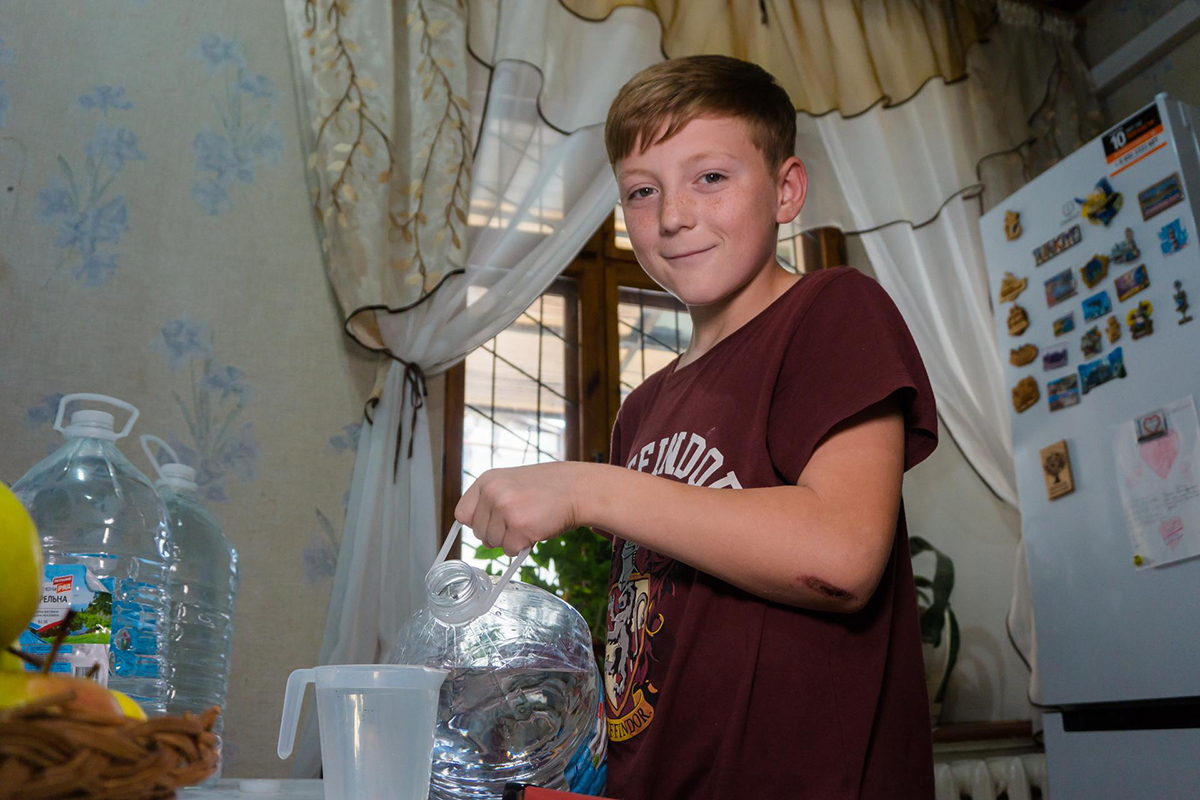‘I thought my life was over’: Ukraine dam blast unleashed dual humanitarian, environmental disaster
In the small hours of early June, 50-year-old hairdresser Iryna woke up to find her home in Ukraine’s south partially submerged in water. “The first thing I felt was fear,” said Iryna, who did not want to disclose her surname. “All I could think … was that my life was over.”
It was June 6, the day Ukraine’s massive Kakhovka hydroelectric dam in the southern Kherson region collapsed, unleashing 18-billion cubic meters of water to flood vast areas downstream including in Iryna’s hometown of Hola Prystan, which was under Russian control.
In many afflicted areas, local residents were prevented occupying Russian forces from evacuating, forcing some to attempt to flee alone. Worried about her mother who lived nearby, Iryna acquired a boat and set out to rescue her. But the boat overturned amid strong currents and she had to turn back.
“Pensioners suffered the most because there was no help,” said Iryna, who added that Russian forces made her sign a form accusing Ukraine of blowing up the dam before she could leave the occupied territory. “They were unable to get out on their own.”
By many accounts, the dam breach triggered one of the worst humanitarian and environmental crises in the war-torn country since Russia invaded last year. Evidence so far suggests that Moscow’s forces, who had occupied the dam area since early in the war, had mined and blew up the Kakhovka dam. Russia has denied those charges.
Ukraine said that 17 people died in the dam blast, while Russian officials said that 35 died in Moscow-controlled territories. Ukrainian officials noted, however, that the true toll would likely be higher since there were many areas they could not access.
In the town of Oleshky 11 people died, according to the head of Kherson region’s Military Administration, Oleksandr Prokudin.
“We understand that there is a very large number of victims there, there is a terrible stench in Oleshky,” he said in the wake of the dam breach. “The bodies of local residents are being taken away.
As the floodwaters receded, Iryna says she witnessed “a lot of corpses … people and animals floating in the water” among the debris.
The dam breach was a grim reminder of the humanitarian costs of war; but the impact to the natural environment was also far reaching.

Photo: Olga Zotova
Andriy Tityapkin, the head of Ukraine’s Scientific Center for Marine Ecology, said that polluted floodwaters have reached as far as the Danube Delta – a natural reserve area Ukraine shares with Romania – and more than 7,300 square kilometers of the Black Sea.
The impact could kill off flora and fauna of the Black Sea, he said. “The intensive development of phytoplankton is one of the consequences of the disaster, which can lead to freezing and the death of benthic and bottom organisms,” Tityapkin told Context.ro.
Water samples around the Black Sea coast of Odessa, for example, have found higher concentrations of oil products, toxic metals, and some organic compounds which exceed permissible levels, he said, adding that the Dnipro-Bug estuary is also heavily polluted.
Satellite imagery of the Black Sea two weeks after the dam breach, shows the distribution of chlorophyll-a – a compound that aids photosynthesis – has bloomed and spread to western parts of the Black Sea such as areas around Romania, Bulgaria, and partially Turkey.
While the results are alarming, Tityapkin noted that his counterparts in Romania and Bulgaria have not recorded any deviations in the overall quality of sea water.

Figure 1 – Satellite imagery (Sentinel-3) and chlorophyll-a distribution (VIIRS-NPP, NASA Ocean Color) in the western part of the Black Sea.
Experts warn that the pollutant heavy metals, organochlorine compounds, and petroleum hydrocarbons that have been released into the Black Sea could contaminate marine animals and enter the food chain if consumed by humans, which could lead to myriad health issues.
Oleksiy Vasylyuk, head of the Ukrainian Environmental Protection Group, said “we will have more details when the results of the sludge analysis” is carried out in the affected areas.
“We have no such results yet,” he said. “No one has taken samples in the places where there was flooding and where all the mud washed up, because it is not currently controlled by Ukraine.”

Photo: Olga Zotova
Edited by Stephen McGrath
Photo: UNICEF


